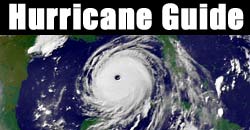Last of Eight Dolphins Stranded by Katrina are Rescued

Update Tuesday, Sept. 20: A bright spot in the wake of Katrina: The last four of the eight bottlenose dolphins that were swept out of an aquarium tank by Katrina have been rescued, according to NOAA officials. Scientists on the scene had not seen the remaining dolphins for a few days and were worried, as the formerly captive animals can't survive long in the wild. All eight of the dolphins are now undergoing evaluation. "The rescue team remains cautiously optimistic that they will recover from this ordeal," said NOAA Fisheries Service lead veterinarian Teri Rowles.
Update Friday, Sept. 16: This morning two of the dolphins were rescued. Trained over the past week to leap onto a mat, dolphins named Toni and Jackie were transferred onto a boat and were moved to a hotel swimming pool. They are both doing well and receiving medical treatment to prevent illness, officials said. The six remaining dolphins are still being fed by Marine Life trainers and are expected to be rescued in the next few days. The story below remains as it originally appeared.
Officials are working to rescue eight dolphins from the Marine Life Oceanarium that were stranded in the Mississippi Sound by Hurricane Katrina.
The bottlenose dolphins were swept out of an aquarium tank by an estimated 40-foot storm surge during the storm. Because these dolphins are from a captive facility, they do not forage for food and may not have the survival skills necessary to avoid predators or boat traffic.
Prior to the storm, the dolphins were moved to a tank that had survived Hurricane Camille in 1969. Things did not go so well this time.
"The water was so high that it submerged the tank and they just swam out," said Elisa DaSilva, education coordinator at Marine Life.
Scientists with NOAA's Fisheries Service spotted the dolphins swimming on Saturday while conducting an aerial survey of natural resource damage. The dolphins are near the mouth of the Port of Gulfport, Mississippi.
Get the world’s most fascinating discoveries delivered straight to your inbox.
Marine Life Oceanarium trainers and NOAA biologists have been feeding the dolphins several times a day from a ship. The group includes two mother dolphins with two young in tow.
"Our biologists and the trainers say all of them appear significantly underweight and have severe to minor wounds," said NOAA Fisheries Service lead veterinarian Teri Rowles. "These animals have been swimming in water, where we are unsure of the conditions, and have been nutritionally stressed for two weeks. We remain cautiously optimistic that they will recover from this ordeal."
Other studies have shown that much of the water in the region is polluted by petroleum products and other chemicals dumped from facilities during the storm.
Due to the condition of the water and the difficulty of the rescue, biologists will capture the dolphins in stages. They plan to transport the dolphins to nearby salt-water pools, provided by the U.S. Navy, to give them medical care and to evaluate them for contagious disease. Rowles said the dolphins would be kept in quarantine while scientists assess their overall health.
"Three of these eight dolphins were born at the facility and had never been in the wild, compacting our concern for their well being," said Moby Solangi, owner and director for the Marine Life Aquarium. "Once we realized the dolphins had been swept out to sea during the hurricane, we feared that they had died. We are just thrilled that they have stayed together during the past couple of weeks."
The dolphin's names: Shelly, Kelly, Jill, Noah, Tamara, Toni, Jackie, and Elijah.
Days before the hurricane, workers at the facility moved another group of dolphins into a hotel swimming pool farther inland. Those dolphins are fine, DaSilva told LiveScience. These animals were moved to the Gulfarium in Fort Walton Beach, Fla.
- Katrina Joins List of 10 Deadliest U.S. Disasters
- Communication Breakdown: From 9/11 to Katrina
- Katrina Destroyed Years of Medical Research
- Housing for Katrina Victims: Ideas from Science Fiction
Deadliest, costliest, busiest months, worst states, plus this year's storm names and more.
The science of monster storms.
Katrina Gallery
Hurricane Gallery






